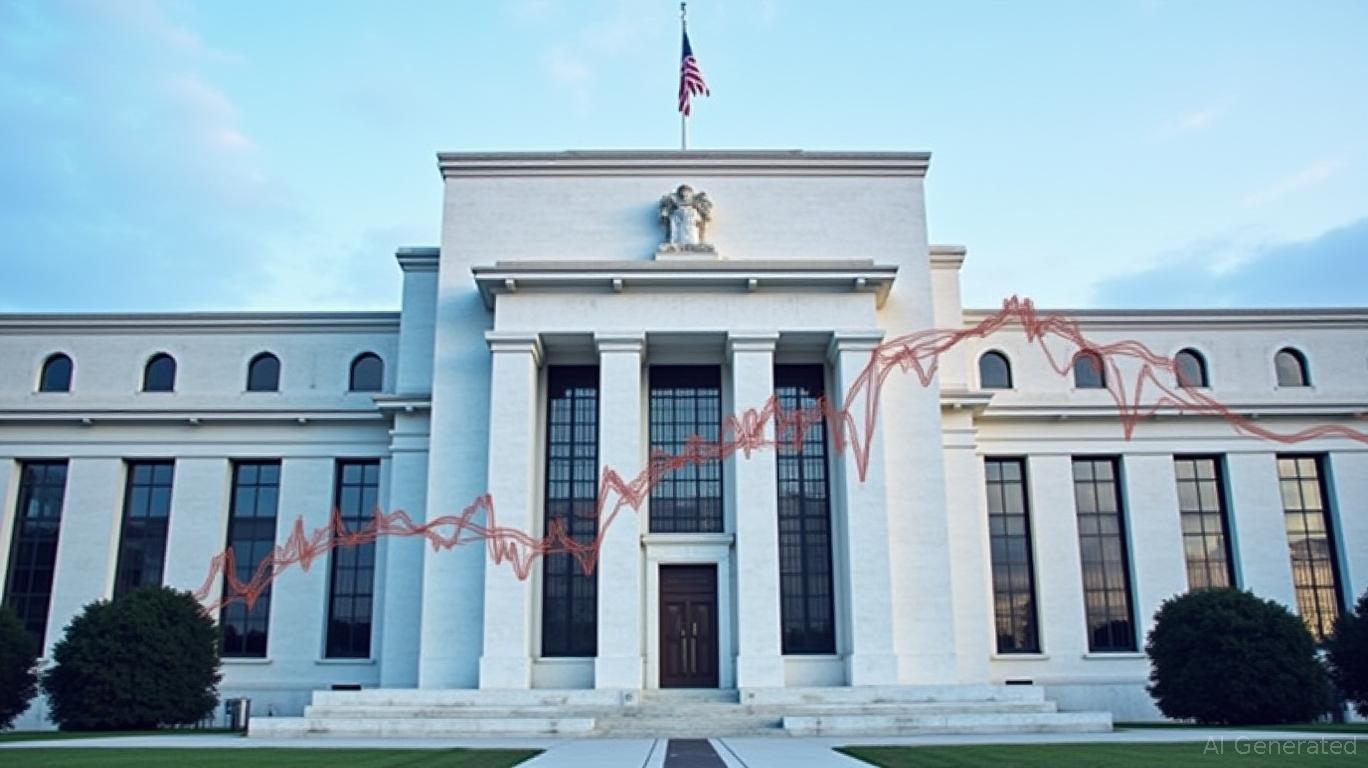The Fed's Delicate Dance: Uncertainty and the Path to Rate Cuts
The Federal Reserve's recent shift toward “data-dependent policy” has left markets grappling with a central question: Will persistent business uncertainty force the Fed to cut rates by year-end, even as inflation remains stubbornly above target? Fed Vice Chair Mary Daly's recent remarks at the 2025 Conference suggest the answer may hinge on a balancing act between economic resilience and the psychological toll of uncertainty on businesses.
At the core of this debate is Daly's acknowledgment of a “pervasive sense of uncertainty” among firms, which could dampen growth prospects and pressure policymakers to ease monetary policy sooner than current rhetoric implies. While Daly emphasized the Fed's commitment to maintaining restrictive rates until inflation is “clearly on track,” her admission that businesses are “hedging against an ambiguous future” opens the door for markets to price in rate cuts as early as late 2025.
The Uncertainty Premium: A Catalyst for Rate Cut Speculation
Businesses today face a perfect storm of risks: lingering inflation, geopolitical tensions, climate-related disruptions, and regulatory shifts. Daly highlighted how recent natural disasters—such as the LA wildfires and Kentucky floods—have exacerbated localized economic scars, with insurance costs rising and recovery timelines stretching. For companies, this uncertainty translates into delayed investments and hiring freezes, even as Daly noted the economy's “solid” fundamentals.
This tension creates a dilemma for the Fed. While Daly stressed that most banks are “managing risks effectively” post-Silicon Valley Bank collapse, she also warned that concentration risks (e.g., reliance on specific industries or geographies) could amplify shocks. For investors, this means heightened volatility in financials and small-cap equities, which are more exposed to regional and sectoral disruptions.

Markets Anticipate Easing: Treasuries and Equities Poised to Benefit
Despite the Fed's hawkish stance, markets are already betting on rate cuts. Futures markets now price in a 60% probability of a 25-basis-point cut by December 2025, up from 30% in April. This shift reflects two realities:
1. Slowing Inflation Momentum: Daly's acknowledgment that inflation is “gradually declining” aligns with recent data showing cooling services prices.
2. Risk of Over-Tightening: With unemployment at 4%, Daly's caution against “premature decisions” hints at a fear of stifling growth.
For investors, this creates opportunities in rate-sensitive sectors:
- U.S. Treasuries: A flattening yield curve suggests investors are positioning for Fed easing. The 10-year Treasury yield has dropped from 4.3% in February to 3.8% as of June 19, 2025.
- Equities: Rate-sensitive sectors like utilities and real estate could outperform if the Fed signals dovishness.
Navigating Policy Ambiguity: Prioritize Liquidity and Diversification
Investors must navigate a landscape where the Fed's “wait-and-see” approach could prolong volatility. Daly's emphasis on fiscal policy's role—such as tax reforms or infrastructure spending—adds another layer of uncertainty. A sudden fiscal stimulus, for instance, could reignite inflation, forcing the Fed to delay cuts.
To mitigate risk, consider:
1. Liquidity Buffers: Hold cash or short-term Treasuries to capitalize on potential dips in equities.
2. Sector Diversification: Pair rate-sensitive stocks (e.g., AT&T, Apple) with defensive plays like healthcare or consumer staples.
3. Bond Ladders: Structure maturities to lock in yields ahead of potential Fed easing.
Conclusion: The Fed's Caution vs. Market Optimism
While Daly and the Fed may resist cutting rates until inflation is decisively under control, the weight of business uncertainty and market expectations will likely push them toward accommodation by year-end. Investors who position for this outcome—while hedging against near-term volatility—can capitalize on a potential “sweet spot” for fixed income and equity returns. As Daly herself noted, clarity will ultimately depend on data, but the path to clarity is paved with uncertainty—and that's where opportunity lies.
Investment thesis: Overweight Treasuries and defensive equities; underweight cyclical sectors until policy clarity emerges.

Comments
No comments yet